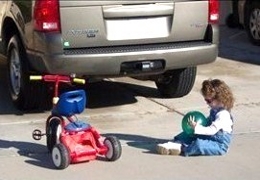 More than 9 million children between birth and age 19 are seen for injuries each year in U.S. emergency departments, and injuries are the leading cause of death among children in this age group.
More than 9 million children between birth and age 19 are seen for injuries each year in U.S. emergency departments, and injuries are the leading cause of death among children in this age group.
The top causes of child injury and the steps you can take to prevent them.
Burns
- Install and maintain smoke alarms in your home.
- Develop and practice a family fire escape plan.
- Set your water heater’s thermostat to 120 degrees Fahrenheit or lower.
- Use safe cooking practices, such as never leaving food unattended on the stove.
Drownings
- Install a four-sided isolation fence, with self-closing and self-latching gates, around backyard swimming pools.
- Learn cardiopulmonary resuscitation (CPR) and get recertified every two years.
- Supervise young children at all times around bathtubs, swimming pools, and natural bodies of water.
Falls
- Use playground equipment that is properly designed and maintained, and that has a soft landing surface material below.
- Use home safety devices, such as guards on windows that are located above ground-level, stair gates, and guard rails.
- Supervise young children at all times around fall hazards, like stairs and playground equipment.
Poisonings
- Store medicines and other toxic products such as cleaning solutions in locked or childproof cabinets.
- Put the poison control number, 1-800-222-1222, on or near every home telephone.
- Dispose of unused, unneeded, or expired prescription drugs.
via CDC Features – Prevent Child Injuries during Home Safety Month.

